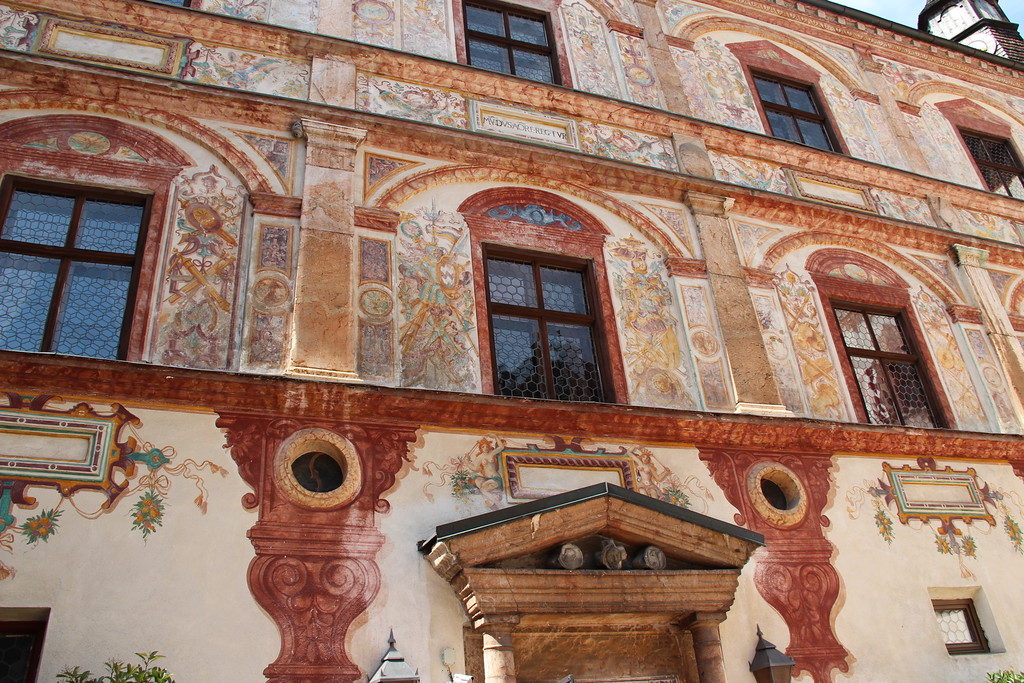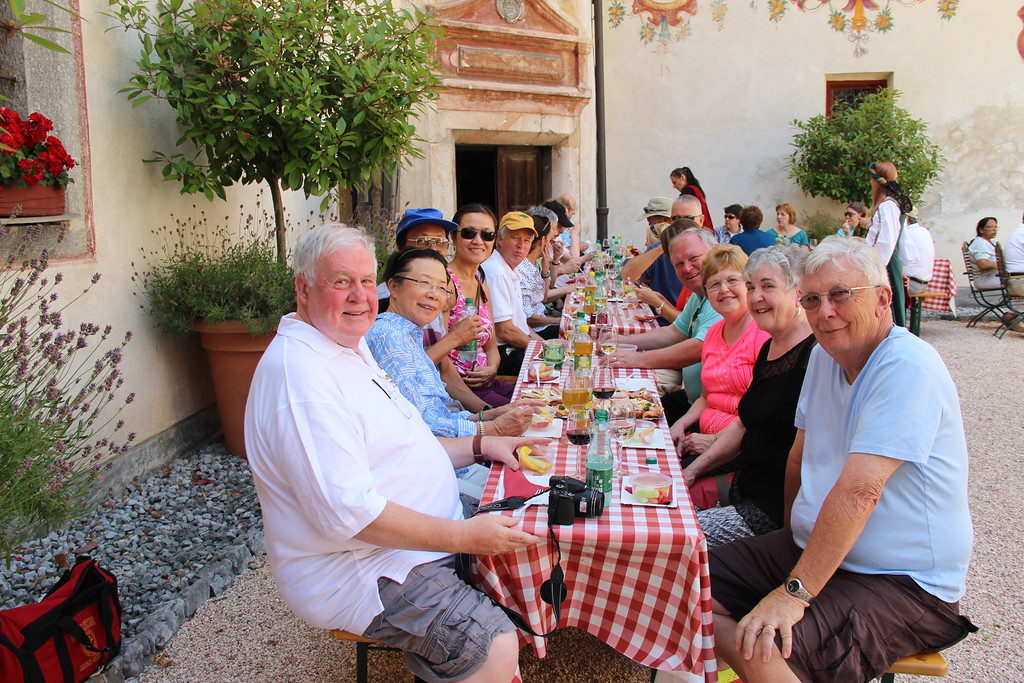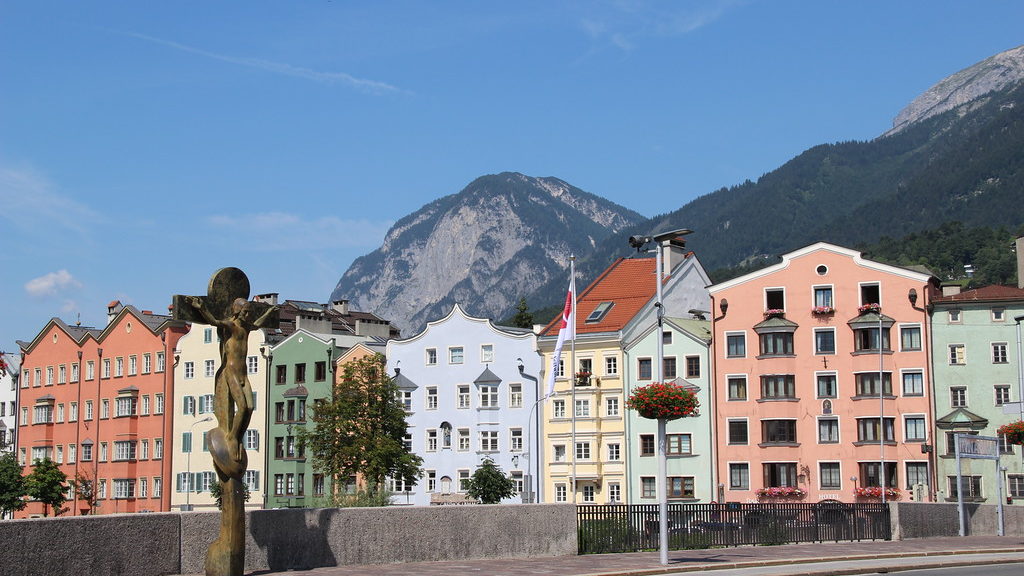
Innsbruck and Tratzberg
We were next headed for Salzburg, but stopped in Innsbruck along the way. We were able to spend the morning exploring. Innsbruck is the capital of the state of Tyrol and lies beneath the Alps. It is the fifth largest city in Austria, but its history and charm are still very much part of its character. Innsbruck was home to Emperor Maximilian I in the late 1400’s and in its more recent history, hosted the Winter Olympics (both 1964 and 1976).
We walked down narrow streets and enjoyed the detail of the shops and buildings. Our local guide told us that the pictorial signs were important in the past because many people could not read. Today, they add to the beauty of the streets.
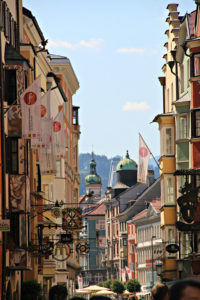



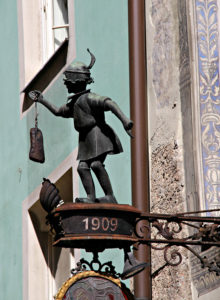
One of the major buildings in Innsbruck is the Hofburg or Imperial Palace. It once served as the residence for the Habsburgs as well as housing administrative offices. The original building was constructed in the 1400’s and has gone through many transformations over the years. In the present, it serves as a museum.
Another iconic building, though not nearly as imposing, is the Golden Roof Museum. Built at the direction of Emperor Maximilian I, the balcony roof has over 2,000 gilded, copper tiles. The Emperor and his wife would stand at the balcony to observe important events, such as tournaments. The balcony is also decorated with sculpted coat of arms and frescoes painted in the 1500’s. Today the Golden Roof Museum is an interactive museum.
Wattens, Austria, just a short distance from Innsbruck, is the headquarters of Swarovski Crystals. There is a site in Innsbruck that features several objects made of crystals. One of these, a large insect, is also pictured here.
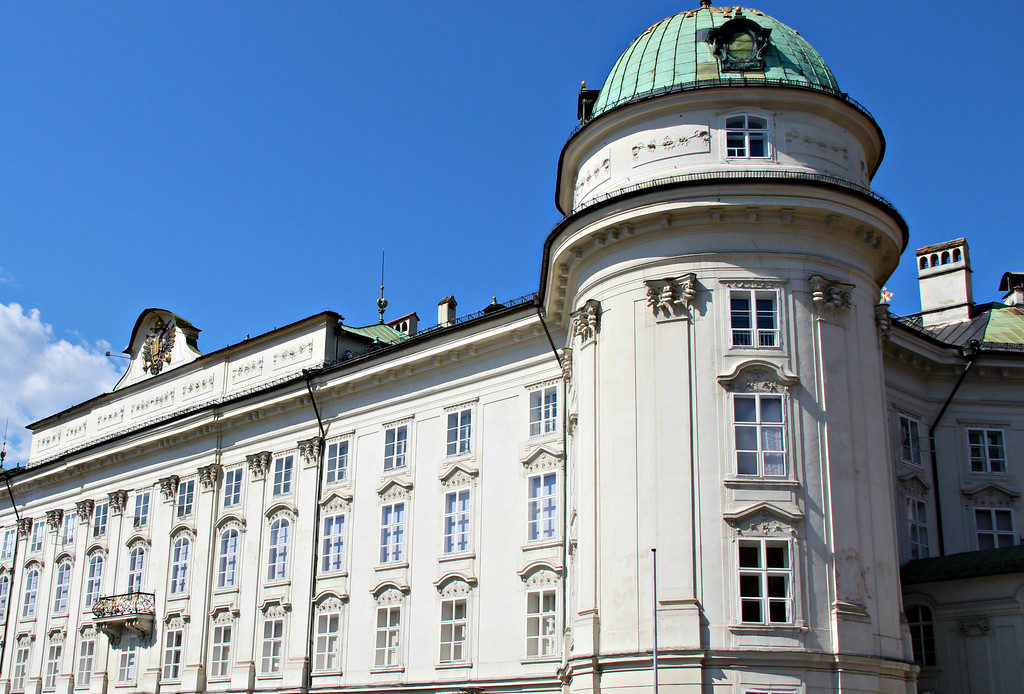
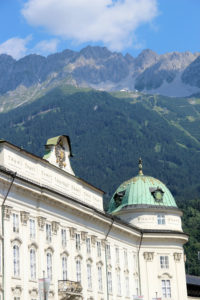
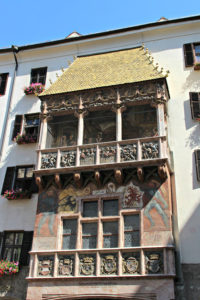
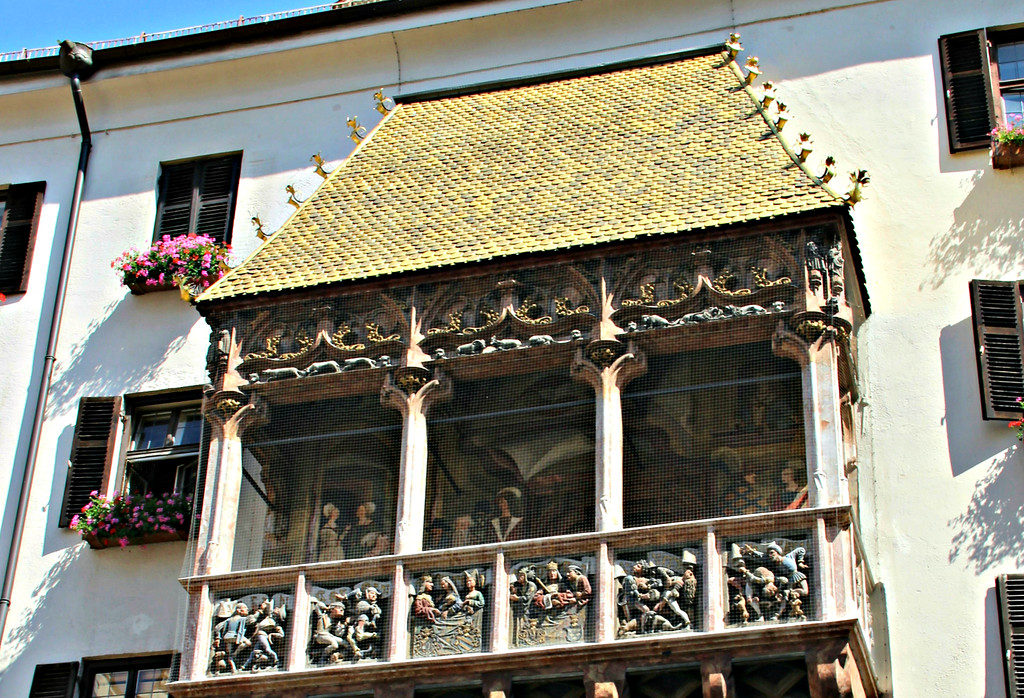

The pictures that follow are of the Court Church or the Hofkirche. From the outside, it presents as a very simple structure. It was built in the 1500’s as a memorial to Emperor Maximilian I. A cenotaph, or empty tomb honoring an individual – in this case the emperor, is a prominent part of the church and is depicted in the second picture. The cenotaph is made of black marble and is surrounded by a wrought iron grill. On top of the cenotaph is a kneeling statue of the emperor. There are twenty-eight life-size bronze statues around the cenotaph which portray the emperor’s ancestors, relatives and other heroes (fourth picture).
The church was damaged in an earthquake, although parts of the original church were preserved. The present altar dates back to the 1700’s and portrays a painting of the crucifixion and bronze statues of St. Francis of Assisi and St. Teresa of Avila. The last pictures depict the beautiful red marble pillars and the church’s ceiling.


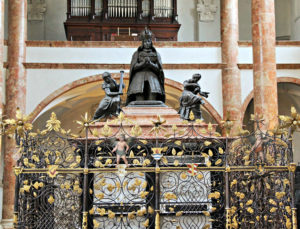

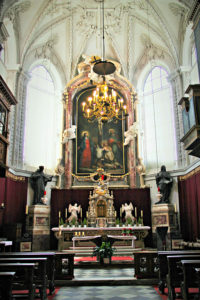
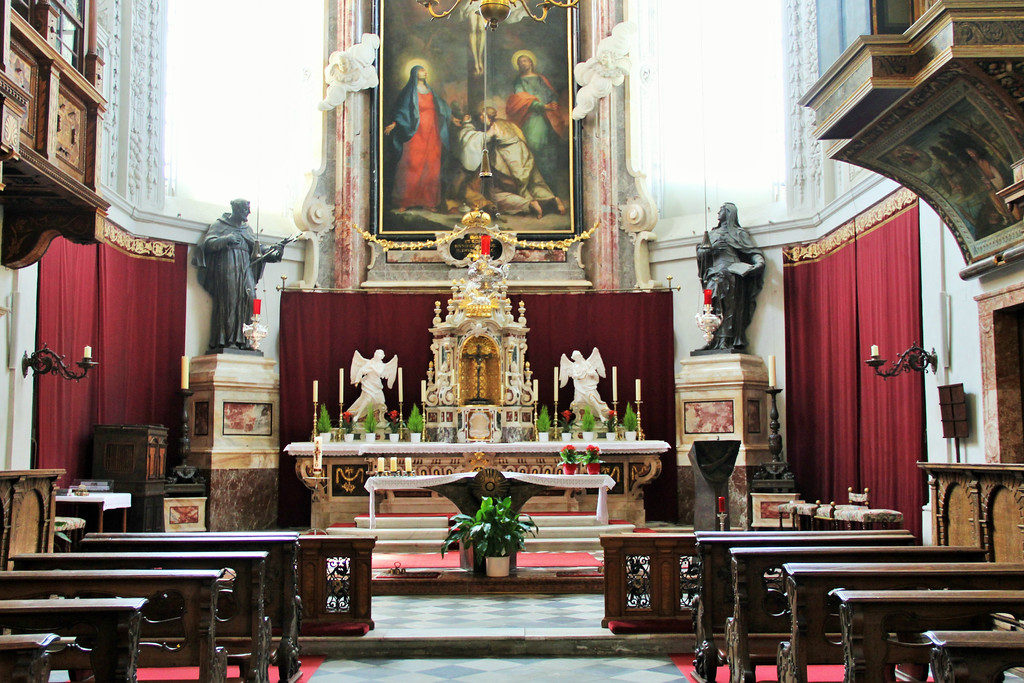

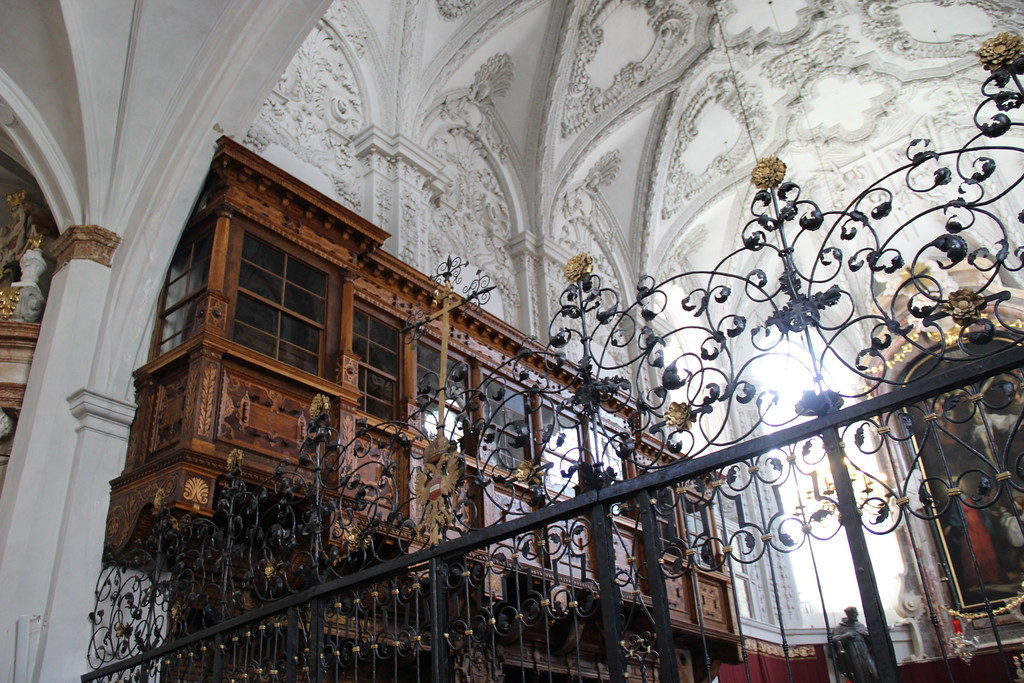
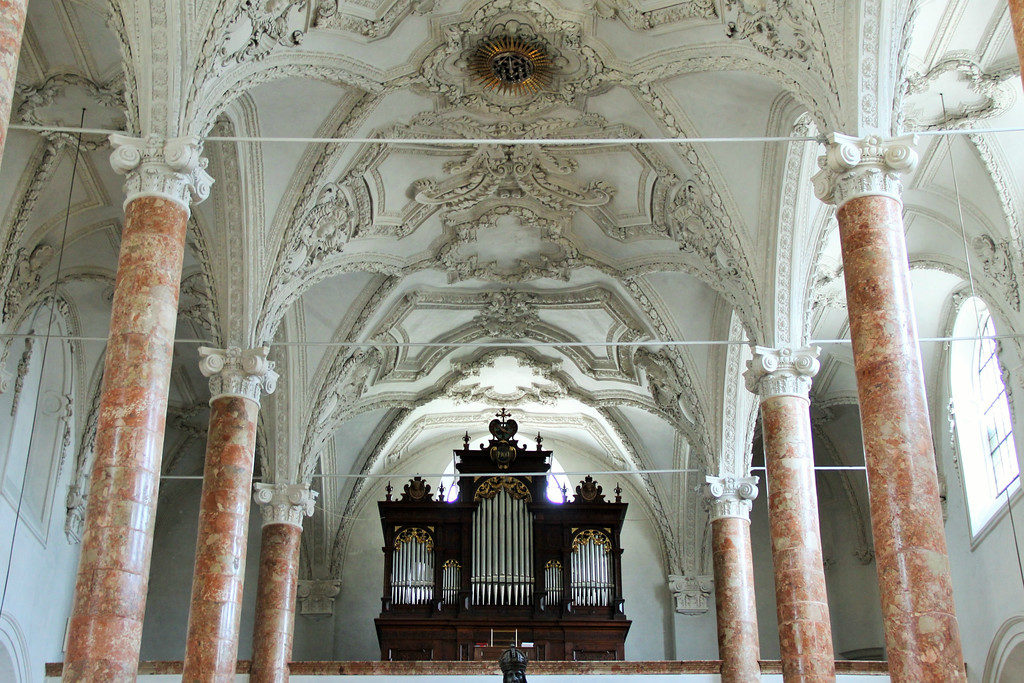
After leaving Innsbruck, we drove to Tratzberg where we saw the Tratzberg Castle. The first picture is one I took as we were driving to Tratzberg. The castle dates back to the 1500’s but was neglected and unoccupied for 150 years. The Enzenberg Family acquired the castle in the 1800’s. It has been restored and opened to the public. While we could not take pictures inside the castle, we were able to take pictures of the beautiful, painted courtyard. And a perfect ending to our visit – our tour group enjoyed wine while sitting together in the courtyard.



